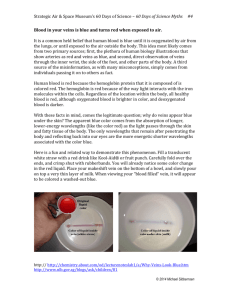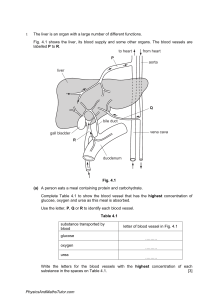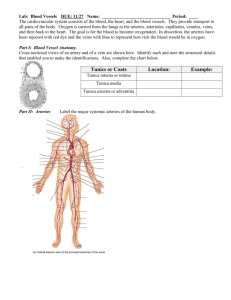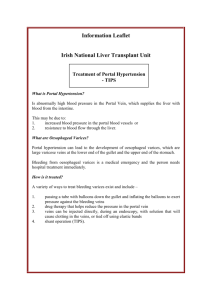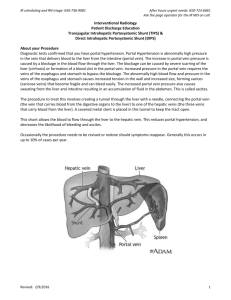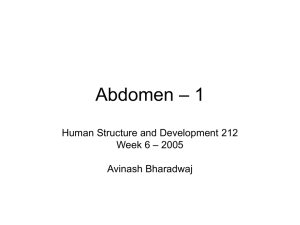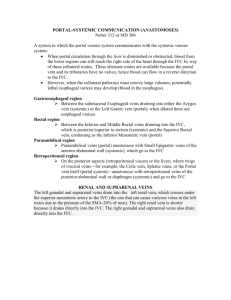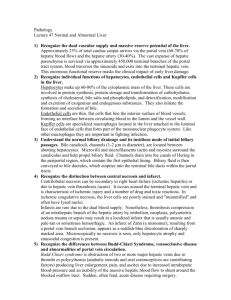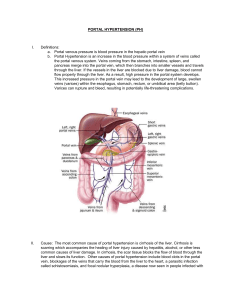Right lobe further divided into
advertisement
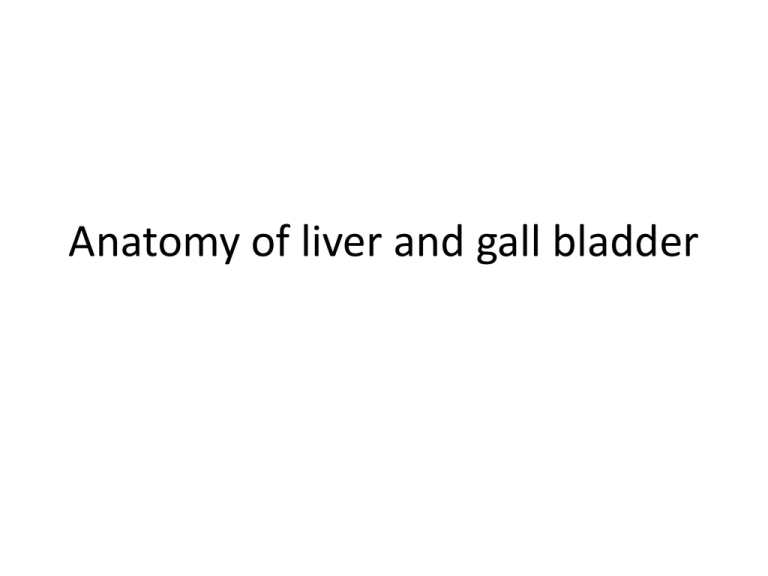
Anatomy of liver and gall bladder • https://www.youtube.com/watch?v=Bgr3wwpUoHM • https://www.youtube.com/watch?v=1oj13Uua00A • By the end of the session the students should be able to: – – – – a. Describe the lobes of the liver and anatomical relations. b. Describe porta hepatis. c. Identify components of hepato-biliary system. d. Comprehend the anatomy of the portal vein; portal venous drainage and porto-systemic anastomosis. – e. Describe the functional anatomy of the gall bladder. – f. Identify blood supply, nerve supply and lymphatic drainage of liver and gall bladder. Lobes of liver and anatomical relations • Liver is divided into right and left lobes by the attachment of falciform ligament. • Right lobe further divided into: – Quadrate lobe and caudate lobe • Relations: – Anterior- diaphragm, R and L costal margins, R and L pleura, lower margins both lungs, xiphoid process. – Posterior-diaphragm, R kidney, R colic flexure, duodenum, GB, IVC, esophagus , fundus (stomach) • Peritoneal ligaments: – Falciform ligament – Ligamentum teres – Ligamentum venosum • Blood supply: hepatic artery • Nerve supply: Sympathetic and parasympathetic nerves from celiac plexus. • Lymphatic drainage: Celiac nodes Porta Hepatis • Is hilum (door) of the liver found on the posteroinferior surface and lies between the caudate and quadrate lobes. • Structures in it: – Right and left hepatic ducts. – Right and left branches of hepatic artery. – Portal vein. – Sympathetic and parasympathetic nerve fibres – A few hepatic lymph nodes. Components of hepato-biliary system • • • • Right and left hepatic ducts Common hepatic duct (CHD) Cystic duct (from GB) joins CHD and forms bile duct. Bile duct (3 inches long) – Enters the 2nd part of duodenum (at its half) along with main pancreatic duct, together they open into ampulla of Vater. – Terminal parts of both ducts are surrounded by sphincter of Oddi. Portal vein • Drains blood from: – Lower 3rd of esophagus to ½ of anal canal. – Spleen, pancreas and gall bladder • Is 2 inches long and is formed behind the neck of the pancreas by union of superior mesenteric and splenic veins. • Enters the liver to break up into sinusoids from which the blood passes into hepatic veins that join IVC. Tributaries of the portal vein • • • • • • Splenic vein Inferior mesenteric vein Superior mesenteric vein Left gastric vein Right gastric vein Cystic veins Porto-systemic anastomosis • Under normal conditions, the portal venous blood traverses the liver and drains into the inferior vena cava of the systemic venous circulation by way of the hepatic veins. This is the direct route. • However, other, smaller communications exist between the portal and systemic systems, and they become important when the direct route becomes blocked. Communications • At the lower 3rd of esophagus, the esophageal branches of left gastric vein (portal tributary) anastomose with the esophageal veins draining middle third of esophagus into azygos veins (systemic tributary). • Halfway down the anal canal, the superior rectal veins (portal tributary) draining the upper ½ of the anal canal anastomose with the middle and inferior rectal veins (systemic tributaries). • The paraumbilical veins connect the left branch of the portal vein with the superficial veins of the anterior abdominal wall (systemic tributaries). • The veins of the ascending and descending colon, duodenum, pancreas and liver and liver (portal) anastomose with renal, lumbar and phrenic veins (systemic) Anatomy of gall bladder • Has three parts: – Fundus, body and neck • Relations: – Anterior= Ant Abdominal wall & inferior surface of liver – Posterior= T. colon+1st and 2nd parts of duodenum • Blood Supply: Cystic artery • Lymph nodes: Cystic lymph nodes • Nerve supply: Sympathetic and parasympathetic fibres from celiac plexus.
